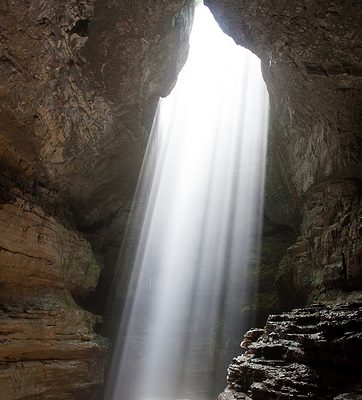In an ideal situation proof would be absolute and acceptance unavoidable.
Historically most of what humanity has believed relating the inner workings of our physical reality has been disproved. Sources of misinformation have included wise elders, philosophers, mystics, representatives of church, state, and science. All been in error.
In the study and practice of the hidden or less obvious arts there comes a point where students encounter the limits of science and must choose for themselves whether to accept what they see and experience, or reject it as illusion or fantasy.
Paraphrasing Dr. Robert Alexander’s observations on reincarnation:these fantastic events ought not be dismissed as statistical anomalies; they need to be investigated and understood for what they are. We may not know HOW something happens, but the observations of WHAT happens cannot be ignored.
As our focus moves from the outer to the inner world — the tools science has to monitor and record events become less useful. For instance, moderns brain studies are giving us a wealth of information on its functions and hithertofore unknown inner workings yet secrets remain. Once science runs out of processes and components to measure I am convinced that unknowns will persist.
While we may be able eventually know a lot about the external world, questions regarding those things we cannot touch will remain as they have for untold centuries. Questions relating to truth, our potential, and the best way for humans to live together will continue to be asked by each and every generation which follows us.
____
As to how we might search for limits and truth in what we refer to as “the paranormal” using established mainstream laboratories and the scientific method?
Consider the studies of Ingo Swann, the man “… best known for his work as a co-creator (according to his collaborators Russell Targ and Harold Puthoff) of the discipline of remote viewing, specifically the Stargate Project.” In addition to basic information and over 50 references the linked Wikipedia article describes several experiments and Swan’s dissatisfaction “… in a role as a passive subject.” Something that ought to be strongly accepted as a precondition to any experiment studying these areas.
Dr. Robert Jastrow has a small oft-told and many versioned parable where he imagines a scene with scientists exhausted from climbing and finally crossing the last false peak on the journey to the summit of “the mountain of nature’s truth” (a.k.a “ignorance”). There they find a party of theologians who arrived centuries earlier asking the newly arrived, “”What took you so long?”
To those of us who experience the unusual, the events that science cannot or has not yet proven, and question what is real and what is imagined there comes a point where even the most skeptical of us must relent and accept that which we see and know as proof enough.
In closing, I ask you to consider the opinion of Sir Arthur Conan Doyle in this recording from 1927:
It consists of two topics. The first five minutes is about Sherlock Holmes. The second, and the remainder of the video, is devoted to “psychic matters.”
– Jeffrey A. Limpert
__________________
References:
https://www.youtube.com/watch?feature=player_embedded&v=hZhMDU9GcVg
https://unfoldingseries.com/reincarnation/belief-in-reincarnation/
https://en.wikipedia.org/wiki/Ingo_Swann
https://en.wikipedia.org/wiki/Robert_Jastrow
https://unfoldingseries.com/borderlands/whats-real-and-whats-imagined/
https://www.youtube.com/watch?v=XWjgt9PzYEM
Image Information:
Pedestal Bathed In Light
By Jeff Hunter
https://secure.flickr.com/photos/wjhunter/3581158395/
Updated on 05/27/2012, 07/18/14

 Amazon – Unfolding: Awakening
Amazon – Unfolding: Awakening